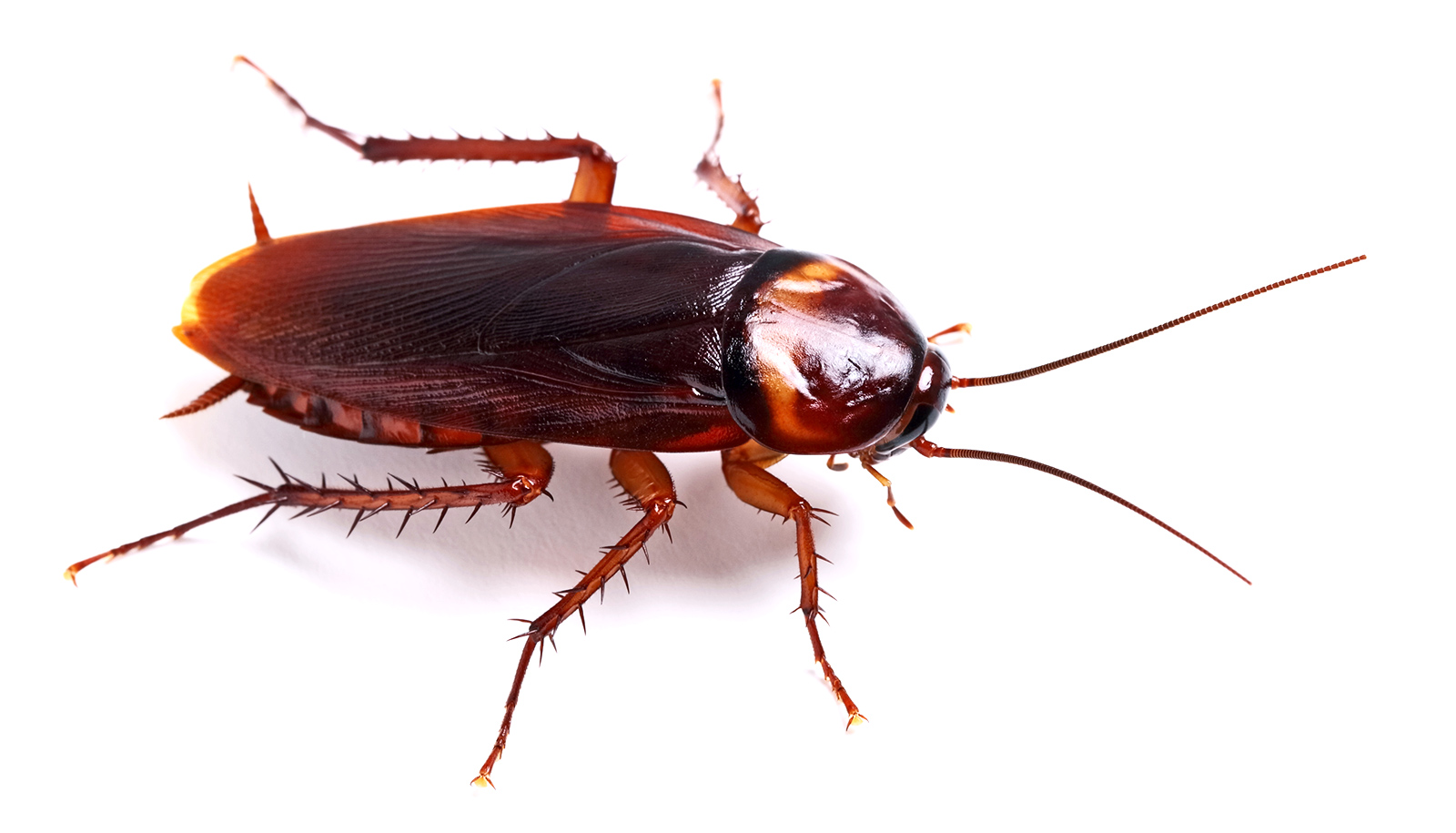
Types of Cockroaches
German or Brown-banded cockroach problems. These small cockroaches can build a “nest” in the smallest of locations; not only cracks under cupboards, but in electrical goods, even hinges or control panels on dishwashers!
5) Check incoming packaging material, such as cardboard boxes. This is a common way for the German cockroach to enter your property and set up home.
German Cockroach – Blattella Germanica
The german cockroach is the most common pest in food premises – it thrives in areas that provide shelter (hollows inside cracks), warmth, food and water. It reaches maturity in as little as 40 days and each egg case contains 30-40 eggs. They congregate in areas, brought together by an aggregation pheromone. The technician will need to identify these harbourages to achieve a successful outcome. Sealing potential harbourages, such as the gap between stainless steel and tiles, can be integral to an effective pest management treatment.
This cockroach measures 1.3 to 1.6 cms long. Is tan through brown to almost black in colour with two dark parallel streaks running from the head to the base of the wings. Rarely flies. They like starch, surgary foods, grease and meats. This type of cockroach can emit an unpleasant odour when disturbed or excited. Due to their small size and prolific breeding habits can become a huge problem.

American Cockroach – Periplaneta
Largest pest cockroach the adult grows to an average 4cms long. They are reddish brown and have a yellowish margin on the body region behind the head. Breeds in sewers and grease traps. Prefers decaying organic matter. Flies readily. Considered to be one of the fastest running insects.

Australian Cockroach – Periplaneta Australasiae
Similar in appearance to American but with more yellow markings. Smaller in size than the American cockroach. Inhabits roof and wall voids, green houses. Prefers plant origin food. Flies on occasions.

Cockroaches lay eggs in a capsule, called an ootheca, containing multiple eggs. The ootheca is distinctive for each species of cockroach. Most species of cockroach drop the ootheca immediately, but the German cockroach carries it until just before hatching, when it releases around 30 tiny nymphs.
The ootheca of the German cockroach has about 18 segments, the brown banded cockroach about 8 segments and the oriental, American, Australian, smoky brown cockroaches have no clear segmentation, but have circular or oval raised areas just below the keel (as seen in the photo)
You might see cockroaches when turning on a light at night. German cockroaches need warmth and humidity and may be found around bathrooms, laundry rooms and kitchen areas. They are also good climbers, scaling smooth surfaces like glass & polished metal with ease due to sticky pads on their feet. Oriental cockroaches can cope with cooler, damp conditions and can be found in basements or drains. Although not as agile as German cockroaches, they can climb a surface such as rough brickwork.
Drains
Some species such as Oriental cockroaches can survive in drier, cooler areas. Look around downpipes for cracks and crevices they might hide in, as well as damaged drain covers they could scuttle through.
Outdoors
Pipe ducts and any opening beneath porches or decking; undisturbed areas of garages and outbuildings; and rubbish tips. Oriental cockroaches can tolerate cooler conditions so can survive outdoors in a greater range of the country than the German cockroach.
- Dark brown or black in colour.
- 20 -25mm long.
- The wings undeveloped in female and cover ¾ length of the abdomen in the male.
Lifecycle
- Females deposit 16 eggs in an ootheca (egg case).
- Hatch in 2 months.
- Nymphs take 6-18 months to develop into adults.
Habits
- Highly adapted for surviving in the natural environment, Oriental cockroaches thrive in cool, damp areas such as basements, drains and openings beneath porches.
- Known for their preference for feeding on garbage and decay, these insects can most commonly be found in rubbish tips and leaf litters.
- Runs rather than flies.

